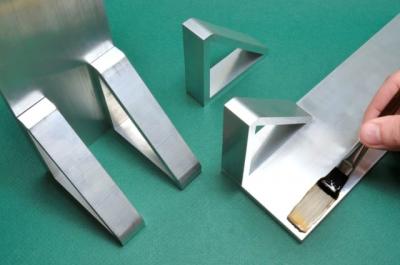Mechanical fastening has long been the standard method of keeping manufacturing assemblies together, but adhesive bonding has seen a rise in popularity as an alternative technique.
Mechanical fastening with screws and rivets, welding or soldering and brazing are effective, yet insufficiently distribute load stress, which compromises structural strength. Additionally, they present a risk of galvanic corrosion and can add weight to a product.
Proponents of structural bonding with adhesives tout advantages in weight, greater structural strength and minimization of galvanic corrosion as primary benefits of using bonding agents such as epoxy resins versus traditional mechanical fastening.
Additional benefits of adhesive bonding include:
- Greater fatigue, mechanical shock and thermal shock resistance;
- Contiguous contact between substrates, which promotes improved load-bearing and sealing properties;
- Ability to bond dissimilar substrate materials, as well as materials with different coefficients of thermal expansion;
- Gap-filling capability reduces required tolerances;
- Thermal and/or electrical insulation or conductivity;
- Wide service temperature range;
- Long term durability.
Despite these benefits, engineers need to carefully plan and execute the application of adhesive bonding – it’s not like a piece of tape you can just tear off and reapply.
It’s important to be mindful of joint designs, performance properties of the adhesive, surface preparation requirements, curing requirements and polymer chemistry options.
Whether you need an epoxy resin, hot melt, contact sprays or other chemistries will depend on your application. It’s important to work closely with your adhesive supplier to clearly define how you can meet your application requirements.
> > > Select herre to read this engineering.com article in full | March 24,2017 |||

